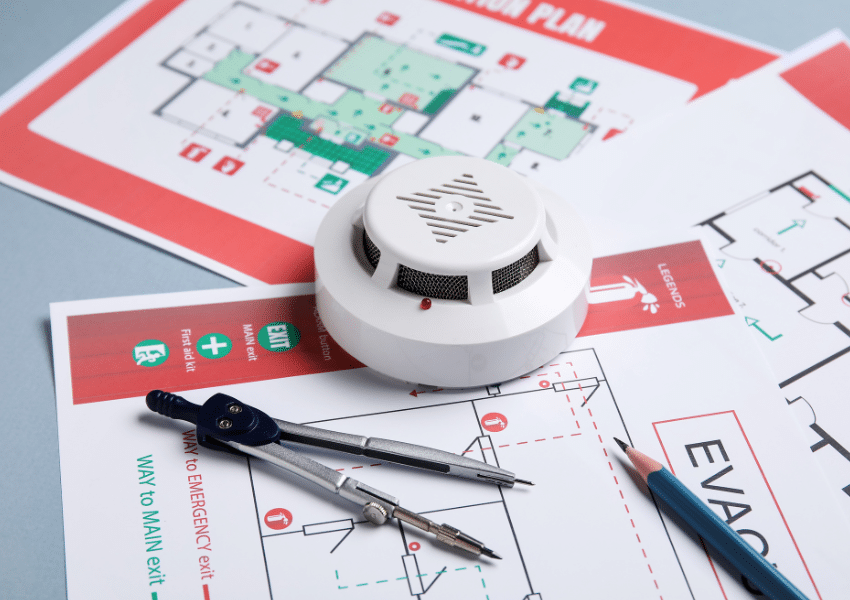
by California Casualty | Auto Insurance Info |
Your car isn’t just a way to get from point A to point B—it’s a billboard for your personality. That minivan? Probably secretly a superhero in disguise. That flashy convertible? Definitely a thrill-seeker who lives for the spotlight. Buckle up, because we’re taking a fun ride into what your vehicle really says about you.
Let’s talk color.
Think of your car’s paint job as a giant mood ring on wheels—broadcasting your vibe before you even step out. Some shades whisper, others shout, and all of them say something about who’s behind the wheel.
- Red – Bold, fiery, and impossible to ignore. A red car screams, “Look at me!” Whether it’s passion, speed, or a thirst for adventure, red drivers are all about standing out.
- Yellow & Orange – Sunny, upbeat, and just a little bit quirky. These rare road gems belong to the optimists and free spirits who aren’t afraid to zig while everyone else zags.
- Green – From eco-warrior to outdoorsy adventurer, green says you’re in tune with nature—and maybe even a little creative. Go bright for playful energy, dark for polished sophistication.
- Blue – Calm, cool, collected. Blue is the color of trust, stability, and loyalty, which is why it’s often the family favorite. Blue-car drivers give off dependable vibes—even if they do secretly speed when no one’s looking.
- Black – Sleek, powerful, and timeless. Black cars exude confidence and prestige. They can be stylishly elegant… or just a little bit intimidating.
- Silver, Gray & White – Clean, crisp, and effortlessly cool. These neutral tones say you appreciate subtlety over flash. Bonus: they hide dirt and scratches better than most—practical and polished all at once.
- Brown, Bronze, Gold & Tan – Down-to-earth and unpretentious, these colors belong to the reliable realists. Whether it’s a latte-like tan or a deep chocolate brown, you’re all about substance over show.
Now let’s talk type.
Your car’s shape says just as much as its color. From low-slung convertibles to family-friendly haulers, the body style you choose is like a personality profile on four wheels. Let’s see what your ride reveals.
The Sleek Sports Car – The Adrenaline Junkie
You’re bold, confident, and not afraid of a little attention (okay, a lot of attention). Life for you is about speed, style, and seizing the moment. Whether you’re chasing the thrill of the open road or just pulling into the coffee shop parking lot, you love to make an entrance. Friends know you as the one who’s always up for an adventure, the one who adds a little spark—and maybe a little drama—to every outing. Buckle up, because with you in the driver’s seat, life is never stuck in the slow lane.
The Practical Sedan – The Organized Achiever
Reliable, steady, and efficient—if you’re behind the wheel of a sedan, people can count on you. You’re the type who actually reads the manual (and maybe highlights it). Schedules, routines, and to-do lists? You’ve got them down to a science. Your car choice reflects your ability to get things done without unnecessary flash. But don’t mistake your practicality for boring—you know exactly what you want, and you know the smartest way to get there. In a world full of detours, you’re the one who always finds the fastest, most sensible route.
The SUV or Crossover – The Adventurer/Family Hero
SUV and crossover drivers are the ultimate multitaskers. One day, you’re hauling soccer gear; the next, you’re loaded up with hiking packs and snacks for a road trip. You thrive on versatility and love knowing you’re ready for anything—from a weekend camping trip to a Costco run. Friends see you as dependable and fun, with a “why not?” spirit that’s always game for the next big adventure. Your car says, “Hop in, there’s room for everyone,” and that’s exactly how you live your life.
The Minivan – The Secret Superhero
You may not always get the flashy spotlight, but let’s be real—you’re the one holding everything together. Minivan drivers are the unsung heroes of the road, juggling schedules, passengers, and bags of snacks with ease. You’re resourceful, patient, and always prepared for chaos (with a pack of wipes hidden in the glovebox, just in case). Behind the wheel, you’re proof that practicality is powerful, and you manage to do it all while keeping your cool. Others might underestimate you, but those who know you understand—you’re the real MVP.
The Convertible – The Free Spirit
Top down, wind in your hair—you’re all about living in the moment. Convertible drivers thrive on freedom, sunshine, and a little bit of flair. You’re spontaneous, fun-loving, and happiest when life feels like a rolling playlist of good vibes. Your car doesn’t just get you places—it turns every drive into a mini vacation. If life is a highway, you’re the one singing at the top of your lungs in the fast lane.
The Electric/Hybrid – The Thoughtful Innovator
Forward-thinking and eco-conscious, you’re not just driving—you’re making a statement. Electric and hybrid drivers care about the bigger picture, and you like to be on the cutting edge of what’s next. You’re smart, intentional, and probably have a gadget or two that makes life easier (and cooler). Your car reflects your values: sustainability, progress, and a touch of sophistication. You’re not just keeping up with the future—you’re helping shape it.
The Vintage/Classic Car – The Nostalgic Romantic
Driving a classic car isn’t just transportation—it’s an art form. You appreciate craftsmanship, character, and things that last. Nostalgic at heart, you value stories, traditions, and the beauty of a simpler time. Friends might tease you for being “old school,” but they secretly admire your sense of style and your refusal to settle for the ordinary. Like your car, you’re timeless—and you wouldn’t have it any other way.
No matter what you drive—flashy, practical, adventurous, or timeless—your car is more than just transportation. It’s part of your story, and it deserves the same care and protection you give yourself. Be sure to protect it with the right insurance coverage to safeguard against the unexpected. Safe travels.
This article is furnished by California Casualty, providing auto and home insurance to educators, law enforcement officers, firefighters, and nurses. Get a quote at 1.866.704.8614 or www.calcas.com.

by California Casualty | Helpful Tips, Homeowners Insurance Info, Safety |
When fire breaks out, every second counts. Knowing exactly what to do—and what to avoid—can mean the difference between safety and tragedy. Whether you’re at home, at work, or out in public, understanding how to respond in a fire emergency gives you the power to act quickly, protect loved ones, and make it out safely.
Understanding the Phases of a Fire
Before you can respond effectively, it helps to understand how a fire behaves. Fires move through distinct phases, though the timing can vary depending on what is burning and where the fire occurs:
- Incipient Phase – This is the very beginning, when the fire first ignites. If detected quickly, it may still be possible to put it out safely with the right tools.
- Growth Phase – Flames spread, heat builds rapidly, and conditions begin to change. This is when a small fire can suddenly get out of control.
- Fully Developed Phase – At its peak intensity, a fire consumes all available fuel, producing thick smoke and toxic gases. Escape is the only safe option.
- Decay Phase – As the fire runs out of fuel, flames and heat decrease, but smoke and gases can still be dangerous.
What to Do in a Fire Emergency
When you encounter fire, your actions need to be quick, calm, and deliberate. Here are the key “Do’s” to remember:
1. Act Early if It’s Safe
If you catch the fire in its earliest stage (the incipient phase), and you have the right type of extinguisher, you may be able to stop it from spreading. Always aim the extinguisher at the base of the flames, not the middle or top.
In the kitchen:
- Turn off the heat source.
- Smother small stovetop flames with a metal lid, baking sheet, or fire blanket.
- Use baking soda or salt on grease fires—but never water or flour.
- Follow these tips for other ways to put out a fire.
- If a fire starts inside your oven or microwave, keep the door closed. The lack of oxygen will usually cause the fire to die down.
If the fire is spreading quickly, do not try to fight it. Get out immediately and call 911.
2. Get to Safety
Plan for at least two exits from every room in your home. Fires often make the most obvious path unusable. Heavy smoke can quickly disorient you, so it helps to know the layout of your home by memory. Practice fire drills with your family so that everyone knows how to react without hesitation.
3. Stay Low
Smoke rises and carries carbon monoxide, which can make you dizzy or even cause unconsciousness. Crawling low to the ground gives you cleaner air to breathe and increases your chance of escape.
4. Stop, Drop, and Roll
If your clothing catches fire, don’t run. Running only fuels the flames. Instead, stop, drop to the ground, and roll back and forth while covering your face. This smothers the flames and helps prevent serious injury.
5. If You’re Trapped
Sometimes escape isn’t possible. If you can’t get out:
- Stay away from doors that are hot to the touch.
- Block smoke by placing wet towels or blankets along the bottom of doors.
- Open windows cautiously, crouching down to avoid rising smoke and heat.
- Signal for help by waving a flashlight or cloth out the window.
What NOT to Do in a Fire Emergency
Just as important as knowing what to do is knowing what not to do. Certain instinctive reactions can actually make things worse:
- Don’t use elevators. Fires can cause electrical failures or trap you inside. Always use the stairs.
- Don’t pour water on grease fires. Water splashes burning oil and creates explosive steam.
- Don’t pour flour on a fire. Flour is combustible. Stick with baking soda, salt, or a fire extinguisher.
- Don’t use water on electrical fires. Water conducts electricity and can cause electrocution.
- Don’t fan flames. Adding oxygen only makes a fire grow.
- Don’t stand too close or reach over flames. Loose clothing can ignite quickly.
- Don’t move burning objects. This can spread flames to new areas.
- Don’t aim a fire extinguisher at the flames themselves. Remember: always target the base of the fire.
Preparing Before a Fire Happens
While these tips can help in the moment, preparation is your best defense. Here’s how to protect yourself and your loved ones:
- Install smoke alarms on every level of your home, especially near bedrooms. Test smoke detectors monthly and replace batteries at least once a year.
- Create and practice a fire escape plan with your household. Make sure every member—children included—knows how to get out and where to meet once outside.
- Keep fire extinguishers accessible. Place them in the kitchen, garage, and near exits. Learn how to use them before an emergency arises.
- Understand the common causes of fires so you can take steps to fireproof your home and minimize these risks.
- Know your insurance coverage. Even when you do everything right, fires happen. Having the right coverage can make the recovery process easier and less stressful.
This article is furnished by California Casualty, providing auto and home insurance to educators, law enforcement officers, firefighters, and nurses. Get a quote at 1.866.704.8614 or www.calcas.com.

by California Casualty | Helpful Tips, Pets |
Ever wonder what’s going on behind those puppy-dog eyes or that flick of your cat’s tail? Spoiler alert: your pet is talking to you all the time. From happy wiggles to warning growls, our furry friends have a whole language of their own. The good news? Once you know how to decode it, you’ll unlock a secret world of wagging, purring, and even side-eye that reveals exactly what your dog or cat is really saying.
Dogs: The Masters of Expression
Dogs are an open book—if you know how to read the pages. Their eyes, ears, tails, and even fur are constantly sending signals about how they’re feeling.
Eyes
- A relaxed dog has soft, almond-shaped eyes that may even squint slightly.
- If their eyes are rounder than usual or showing a lot of white (often called “whale eye”), they may be stressed or on edge.
- Dilated “glassy” pupils can mean fear or high arousal.
- Dogs that avoid looking at you directly are feeling uneasy. They also may be resource guarding food or a toy.
- Calm, soft eye contact shows trust. Prolonged, hard stares, however, are a challenge—best to avoid.
Ears
- Forward-facing ears mean interest and alertness (even floppy-eared pups will shift the base forward).
- Slightly back often means relaxed and approachable—especially if paired with a wagging tail.
- Pinned flat against the head? That’s a sign of fear, nervousness, or submission.
Mouth
- A relaxed dog usually has a slightly open mouth with upturned corners.
- Closed, tight lips or pulled-back corners can signal fear.
- Wrinkled muzzle and bared teeth = warning: back off.
- Some dogs even show a “submissive smile” (teeth showing with wagging tail, lowered head, squinty eyes).
- Yawning or lip licking can be early signs of stress.
Tail
- Neutral (in line with the spine) = relaxed.
- High and stiff = excitement or agitation.
- Tucked between legs = fear or discomfort.
- Loose, wagging tail = friendly—but always check the rest of the body for context.
Vocalizations
- Barking can mean joy, fear, or alertness—tone and pitch matter.
- Whining often signals a need for attention, comfort, or even pain.
- Yelps = pain.
- Growling = a clear warning.
- Howling may be a response to sounds or a sign of anxiety.
Posture & Movement
- Play bow (front end down, rear up, wiggly movements) = “let’s play!”
- Rolling on back can mean trust—but it’s not always an invite for belly rubs.
- Frozen posture = fear or guarding behavior.
- Trembling may signal anxiety but also check for medical issues if it’s frequent.
- Raised hackles (the hair along the back) don’t always mean aggression—they can signal fear, stress, or excitement.
Pro Tip: Keep your pup mentally engaged with Brain Games for Dogs.
Cats: The Subtle Storytellers
Cats can be a little harder to read than dogs, but once you know the signs, their signals are just as clear.
Eyes
- Slow blinks are the ultimate “I love you.”
- Dilated pupils = excitement, fear, or aggression.
- Constricted pupils = tension or aggression.
- A hard stare can mean dominance or a brewing fight.
- A sideways glance can mean trust and comfort.
Ears
- Forward and relaxed = curious, content.
- Flat against the head = annoyed, scared, or defensive.
- Constant swiveling means they’re listening intently.
Tail
- Upright with a slight curve = happy, confident cat.
- Puffed up = scared or upset.
- Flicking or thrashing = irritated—time to back off.
- Low and tucked = anxious or frightened.
Whiskers & Fur
- Forward whiskers = curiosity and excitement.
- Pulled back whiskers = fear.
- Fur standing on end (with arched back) = threatened or defensive.
Vocalizations
- Growls, hisses, yowls = “back off.”
- Purring usually signals contentment—but sometimes pain.
- Trills (that high, chirpy sound) = friendly greeting.
- Meows and chirps can mean anything from hunger to frustration to simple “chattiness.” If it’s constant, check with your vet to rule out meows due to pain.
Posture & Behavior
- Play mode: crouching, pouncing, bringing you toys.
- Crouched ball: ready to spring—anxious or fearful.
- Belly up: trust, but not always an invitation for tummy rubs. The cat could latch onto your well-meaning hand with its claws and teeth.
- Arched back with fur up: fear or aggression.
- Cats often point their whole body toward where they want to go—it’s their way of saying, “excuse me, I’m headed this way.”
Building a Better Bond
Learning to “speak” dog and cat doesn’t just prevent misunderstandings—it strengthens the bond you share. You’ll know when your dog really wants to play, when your cat is overstimulated, and when either one needs a little space. Over time, you’ll find yourself communicating so well, it’ll feel like you and your furry friend share your own secret language.
We love our pets, and part of caring for them means protecting their health and wellbeing. Make sure your dog or cat is fully protected with pet insurance. Looking to save on veterinary care? Check out our blog on 9 Ways to Save on Your Vet Bill.
This article is furnished by California Casualty, providing auto and home insurance to educators, law enforcement officers, firefighters, and nurses. Get a quote at 1.866.704.8614 or www.calcas.com

by California Casualty | Helpful Tips, Homeowners Insurance Info |
That picture-perfect porch or freshly painted shutters might catch your eye but looks aren’t everything when it comes to house hunting. The smartest buyers dig deeper, considering how a home’s layout will work day-to-day, the strength of the neighborhood, and how well the property will hold its value over time. After all, the best home isn’t just the one that charms you at first glance—it’s the one that pays off in the long run.
Here are some key things to look for beyond curb appeal when you’re searching for your next home.
Natural Light
A bright, airy space feels welcoming—and it can save you money on utilities by cutting down the need for artificial lighting. As you walk through a potential home, notice the direction of the windows and how the sunlight filters into each room. Morning light may make a kitchen cheerful, while evening sun could make a family room glow. Don’t just admire the view—test the windows. If they stick or are difficult to open, it might indicate foundation or insulation issues. Outdated windows may also need replacing, which can be a costly project.
Storage Space
It’s easy to fall in love with a home during a tour, only to realize later that there’s nowhere to put your holiday decorations, sports equipment, or bulk groceries. Storage goes beyond closets—think attic, basement, garage, pantry, and even built-in cabinetry. Ask yourself whether the available storage fits not only your current lifestyle but also your future needs. After all, homes have a way of filling up quickly.
Layout and Flow
The layout of a home impacts your daily routine more than you might realize. Picture yourself moving through the space: is the kitchen conveniently located near the dining area? Is there room to entertain friends, host family gatherings, or create a home office if you need one? Pay attention to how the rooms connect. An awkward floor plan can make everyday life feel more complicated, while a well-designed layout adds comfort and efficiency.
Noise Levels
Silence is golden—or at least, peace and quiet can be. While touring, pause and simply listen. Do you hear traffic, barking dogs, or nearby train whistles? Inside, thin walls may let in sound from neighbors or other parts of the house. For a more complete picture, ask future neighbors about noise at different times of day. What’s peaceful during an afternoon showing might sound very different on a Saturday night.
Odors and Air Quality
Your nose knows. Strong odors can signal deeper problems, like water damage, frequently flood basements, mildew, or smoke. Musty smells might point to leaks or poor ventilation, while pet accidents or cigarette smoke can be stubborn to remove. Air quality is not only a comfort issue—it’s a health consideration. If something smells off, take it seriously and investigate further.
Functionality and Condition
Think about whether the home is move-in ready or if you’ll need to tackle renovations before unpacking boxes. Check appliances to ensure they’re in working order. Test faucets, light switches, and outlets. Little things add up, and repairs can quickly turn a “dream home” into a financial drain if you’re not prepared.
Foundation and Structural Issues
A beautiful exterior can hide serious problems. Look for cracks in the basement walls or around the outside of the home. Uneven floors, sticking doors, or gaps in window frames can also be red flags. While not every crack is cause for alarm, structural concerns are best evaluated by a professional inspector before you make an offer.
Features and Maintenance
Extra features can be both a blessing and a burden. A spacious lawn may look like the perfect play area, but it will need regular mowing and landscaping. A pool can be fun in the summer, but it comes with ongoing maintenance, insurance considerations, and added liability. Consider carefully which features enhance your lifestyle and which may turn into costly chores.
School District
Even if you don’t have children, the quality of the local schools impacts property values. Homes in sought-after school districts tend to hold value better and sell more quickly. If kids are in your present—or your future—it’s an even more critical factor. Research test scores, extracurricular offerings, and community reputation to make an informed decision.
Long-Term Value
Buying a home is one of the largest investments you’ll make, so think long term. Look for homes in neighborhoods where property values are trending upward. A smart rule of thumb: buy the lowest-priced home in the best neighborhood you can afford. Over time, that decision could pay off with significant equity growth.
Budget and Affordability
Before you fall for any home, take a hard look at your budget. Factor in more than just the down payment and monthly mortgage. Closing costs, utilities, property taxes, home insurance, and future repairs all add to the bottom line. Don’t forget the cost of a professional inspection—it’s money well spent to avoid surprises later. Getting pre-approved for a mortgage helps you know exactly what you can afford, and protecting your investment with the right insurance ensures peace of mind.
The Bottom Line
Curb appeal matters—it’s often what draws you to a home in the first place. But the smartest house hunters know to dig deeper. Natural light, storage, layout, functionality, neighborhood trends, and long-term value all play a part in making a home the right fit. By asking the right questions and looking beyond the surface, you’ll set yourself up not only for a smooth move-in but also for a smart financial future.
This article is furnished by California Casualty, providing auto and home insurance to educators, law enforcement officers, firefighters, and nurses. Get a quote at 1.866.704.8614 or www.calcas.com.

by California Casualty | Auto Insurance Info, Helpful Tips, Safety |
When it comes to keeping you safe behind the wheel, nothing works harder than your brakes. They’re your car’s first line of defense against accidents, yet most drivers don’t think about them until something goes wrong—a squeak, a grind, or that sinking feeling when the pedal doesn’t respond like it should.
The good news? You don’t need to be a car expert to understand how brakes work or how to spot trouble before it turns into a safety issue. With a little knowledge, you can keep your brakes in top shape and give yourself peace of mind every time you drive.
How Do Brakes Actually Work?
At their core, brakes use one simple idea: friction. When you press your foot on the brake pedal, you’re triggering a hydraulic system—a system powered by fluid—that pushes brake pads or brake shoes against a spinning surface attached to your wheels. That pressure and friction are what slow your car down.
Think of it like riding a bicycle. When you squeeze the hand brakes, the pads press against the rim of the wheel, creating friction that makes the bike stop. Your car brakes work on the same principle, just on a larger and more powerful scale.
Most modern cars also have power-assisted brakes, which make it easier for you to press down, and an anti-lock braking system (ABS), which prevents the wheels from locking up during sudden stops. That keeps your car more stable and easier to steer in an emergency.
Disc vs. Drum: The Two Main Types of Brakes
Most vehicles on the road today use a hydraulic braking system with either disc brakes, drum brakes, or a combination of both.
- Disc Brakes: These are the most common, especially on the front wheels (which handle most of the stopping power). A spinning disc, called a rotor, is clamped by a caliper holding brake pads. When you press the brake pedal, the pads squeeze the rotor, creating friction to slow the wheel.
- Drum Brakes: These are more often found on rear wheels. Inside the brake drum, brake shoes are pressed outward by pistons when you hit the brakes, rubbing against the drum to slow the car.
You don’t need to memorize the mechanics, but it helps to know that both systems rely on brake fluid, pads or shoes, and the principle of friction to get the job done.
Warning Signs Your Brakes Need Attention
Brakes give you plenty of signals before they fail completely. The key is to notice them early:
- Strange Noises: A squeal often means your brake pads are wearing thin. A grinding sound could mean the pads are worn down completely, with metal scraping against metal.
- Soft or Spongy Pedal: If the brake pedal sinks toward the floor or feels unusually soft, it may signal a leak in the brake system or air in the brake lines.
- Car Pulling to One Side When Braking: If your vehicle veers left or right when braking, it could be uneven brake wear, contaminated fluid, or a problem with the brake linings.
- Dashboard Warning Lights: Don’t ignore that glowing brake light. It’s your car’s way of asking for help.
If you notice any of these symptoms, it’s time to schedule a brake check before things get worse.
Simple Brake Maintenance Tips
You don’t need to be a mechanic to stay on top of basic brake care. A little attention can go a long way toward preventing costly repairs and keeping you safe. Here are some practical steps:
- Check Brake Pads: Brake pads wear down over time. If they’re less than ¼ inch thick, it’s time to replace them. Worn pads reduce your stopping power and can damage other parts of the braking system.
- Watch for Grease or Debris: Brake pads should be clean and dry. Grease or oil on them can reduce friction, making it harder to stop.
- Brake Fluid: Your mechanic should check the level and condition of your brake fluid regularly. Fresh brake fluid is clear or light in color. Dark or dirty fluid should be replaced.
- Rotors and Drums: Look for signs of grooves, cracks, or warping. Depending on the severity, they may need to be resurfaced or replaced.
- Brake Lines: Over time, brake lines can develop leaks from corrosion or damage. Any leak in the system reduces braking power and must be fixed immediately.
A good rule of thumb is to have your brakes inspected at least once a year—or sooner if you notice any changes in how they feel or sound. The cost of regular maintenance is small compared to the expense (and stress) of major repairs, not to mention the potential consequences of an accident.
Brakes may not be the flashiest part of your car, but they’re among the most important. Knowing how they work, spotting warning signs early, and keeping up with maintenance can give you confidence on the road and keep you—and your passengers—safe.
Of course, even the best brakes can’t prevent every unexpected situation. That’s where the right insurance comes in. Just as your brakes protect you in the moment, good coverage protects you afterward—helping you recover from accidents, repairs, or losses. Together, brake care and the right insurance give you the peace of mind to enjoy the drive, knowing you’re fully protected.
This article is furnished by California Casualty, providing auto and home insurance to educators, law enforcement officers, firefighters, and nurses. Get a quote at 1.866.704.8614 or www.calcas.com.





